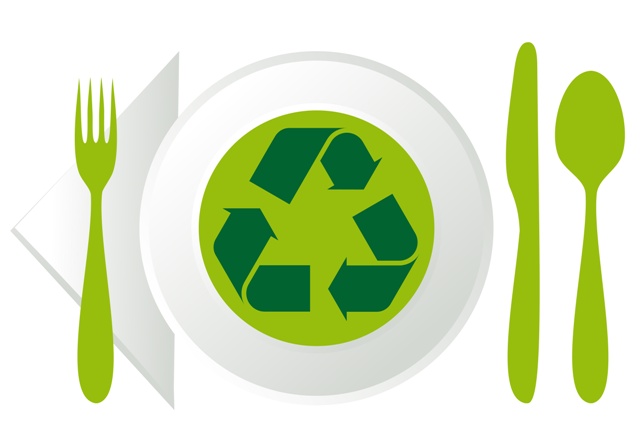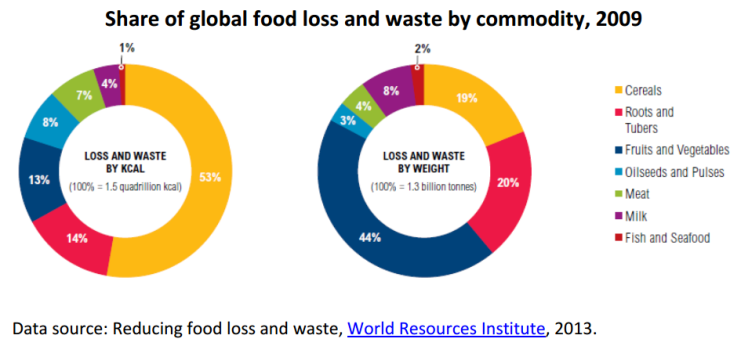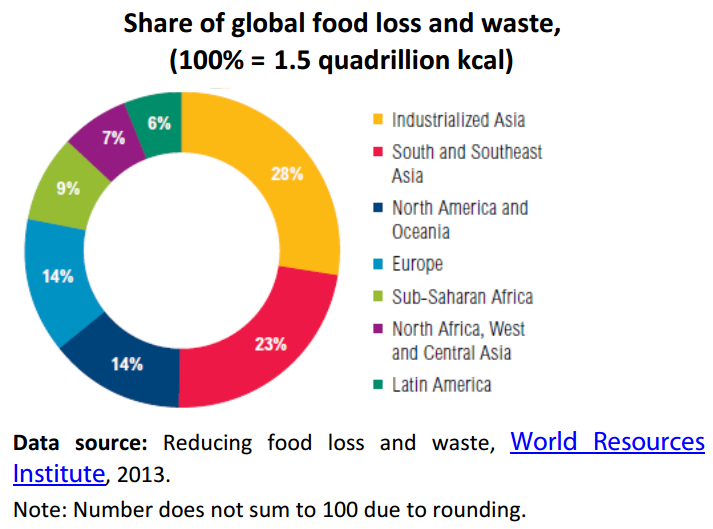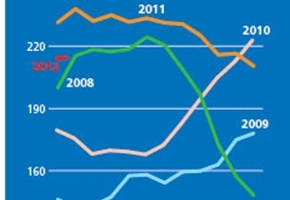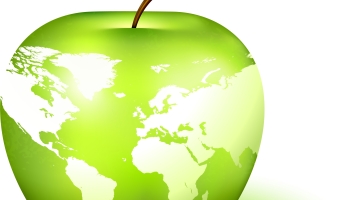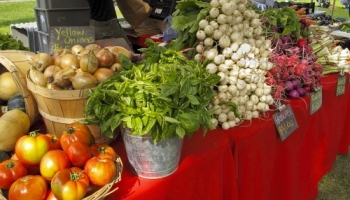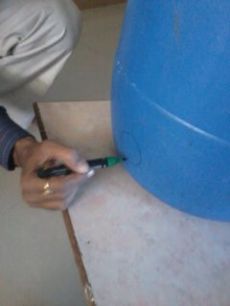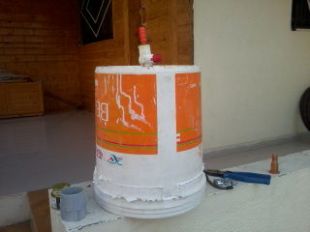| Assignment |
2013 |
| PG CertTrinity St David, Wales |
Sense of Place Peter O’Connor, 1202618 Lismore, Co Waterford, Ireland. |
| [“The past is integral to our sense of identity – the sureness of ‘I was’ is a necessary component of the sureness of ‘I am’. How important are issues of authenticity and bias in engineering a sense of identity or a sense of place?] |
| |
“The past is integral to our sense of identity – the sureness of ‘I was’ is a necessary component of the sureness of ‘I am’ Lowenthal, 1985, p41)
How important are issues of authenticity and bias in engineering a sense of identity or a sense of place?
Contents.
Introduction; 2
Folk Memory; 2
Some History. 3
Celtomania in the 18th & 19th Centuries; 3
Bob Quinn. 4
The Mainland Celts. 4
Celtic languages. 5
The sail boats . 6
DNA Evidence and Oxford Scholarship. 7
DNA findings; 7
Oxford Scholars. 7
References; 8
Notes;. 9
Photography. 9
Collective Consciousness. 10
Lateen Sails; a note. 12
Ireland’s Golden Age;. 12
DNA Tests;. 12
Resources;. 13
Introduction;
Authenticity and bias in engineering a sense-of-identity or a sense of place may seem at first glance a trite way at poking fun at historians who become set in their way and refuse to allow for external considerations or influences. There’s more than historians at fault for some-bias in engineering an identity or (eventually) a sense of place.
Doctored images can affect what we eat, how we vote and even our childhood recollections. A book Ireland Photographs of 1800’s show staged photos. We all know about how the Soviets unashamedly added (or more usually) ‘extracted’ images of people in photos – even in their encyclopaedias.
New York Metropolitan is currently featuring some 200 photographs created between the 1840s and 1990s in the service of art, politics, news, entertainment, and commerce and the changing relationship to visual truth; Manipulated Photography Before Digital Age[1]; More recently changes were made to photos of Hurricane Sandy approaching New York. (Fake Sandy[2]). These images were used to heighten emotions for callous or possibly financial-reasons.
Even more disturbing is the fact that we can manipulate people close to us and others by providing evidence-of-events that simply have not happened. In a study by Elizabeth Loftus Make-Believe-Memories. 2003) it became apparent that old memories seem to be the easiest to manipulate. In one particular study, subjects were showed images from their childhood. Along with real images, researchers snuck in doctored-photographs of the subject involved in particularly memorable-events. After seeing those images, 50% of subjects recalled some part of that hot-air balloon-ride – though the event was entirely made up. (Springer Link pdf).
David Lowenthal points out that “Where history remains remote and critical of its view of the past, heritage thrives on persona- immediacy and embraces the past as building-blocks of identity” Macdonald, S. 2006 International Journal of Heritage Studies.pg 22. This is especially important to remember when considering photographs of war where “augmentation” is used to manipulate scenes to galvanise public and military alike to great force. Soviet photos of the war on their soil were changed to show Germans in the worst possible light. Even the Allies showed a short clip of Hitler ‘dancing’ when in fact it was him walking – but the film was ‘looped’. Probably we should never trust any photos of wars.
Folk Memory;
Throughout the history of mankind folk-memory has played a huge role is passing on knowledge and wisdom. It can be in the form of nursery rhymes explaining the effect of the plague (Ring-a-Ring-a-Rosy) to folk songs warning of lovers-tiffs to suicidal tendencies (Barbara Allen). Or it can be in the stories we all learn about the early settlers arriving over the sea and settling in the South and West. But then for 300 years we’ve been told that our ancestors come from central Europe.
Even the ‘collective conscience’ as described by Emile Durkin [i]can hold memories that provide succour and comfort as well as fortifying a ‘national spirit/stiff upper-lip’. It can also sustain a nation that feels cut off from mainland Europe in a time of crisis.
However what happens when there is a serious push to rearrange the history of a country and its people? What happens when there is serious bias in engineering an identity or (eventually) a sense of place for an entire nation?
Some History.
The Norman/Welsh chronicler-geographer Sylvester-Giraldus Cambrensis often comes in for a lot of criticism for his misrepresentation of people and places and he was not above presenting ‘facts’ as such even though they were blatantly untrue as that the Welsh invented the longbow. (Dr Andrew Halpin, 2012). Others though in more enlightened-ages have created more disservice to academic-research.
Celtomania in the 18th & 19th Centuries;
Around 1707 when Edward Lluyd dreamt up his notion that all indigenous inhabitants of the British Isles (sic) were of ‘Celtic origin[3] it was purely to distinguish between British and Welsh.. This however in his eyes allowed for no input from the South-West. What Lluyd (and many others including William Stukeley 1687-1765) seemed incapable of understanding that sea-roads were infinitely easier to traverse than ‘roads’ that were of little more than animal tracks.
Before Lluyd and Stukley none of the peoples of the lands now referred to as Celtic had any collective name [4]at all. Irish, Scots, and Manx referred to themselves collectively as Gaels, while the Welsh use the term Cymry. (Welsh is a Saxon-derived word meaning “stranger.”). Ironically one Irish word for a stranger is gall which is often associated with Wales and in place-names translated as Ballydavid, (Irish- Baile na nGall).
William Stukeley also did work that led to the term “Celtic” being applied to pre-Roman sites such as Stonehenge and Avebury, and various tombs and standing stones. Most of these pre-date the Romans and ‘Celts’ by many millennia as we now know.
Alongside the genuine serious achievements in the Celtic languages by the likes of Lluyd and Zeuss there was a huge rise on nationalism in ‘Celtic’ countries (Cunliffe, Ancient Celts 11-16; Piggot, Druids123-182, 1968 ).There were three influential propagators of ‘imaginative-romantic-view’ of the Celts; namely William Stuckley, James Mac Pherson and Iolo Morganwg. These men are now considered to have “poisoned the wells of genuine scholarship …for years to come” (Piggott 1968).
Stuckley’s work is now largely discredited but not before the ideas were firmly implanted in the minds of the public and the idea of ‘British druids’ romping around Stonehenge and other monuments is well embedded. MacPherson was soon discovered to have forged his study by simply writing poetry and passing it off as Poems of Ossian, Fragments of Ancient Poetry (1760) supposed genuine Gaelic epic. Germans in particular loved this idea of ‘fellow-Aryans’ (Quinn 2006) A more successful enterprise was that by a stonemason called Edward Williams (Iolo Morganwg) who promoted the idea that he, and other ‘bards’ had preserved, virtually intact, a continuous tradition of lore and wisdom going back to prehistoric times (Piggott, Druids ). This fabrication whilst romantic was able to be passed off as scientific-evidence, something all serious-scholars now rue. It’s not so much a bias as a twisting of facts.
Later in an attempt to make the disenchanted/disenfranchised people of “West & North Britain[5]” (sic) more ‘British especially after the terrible series of famines in 1840’s the notion of a Celtic Nation was revived. Even the newly emerging theatre of Yeats and Gregory embraced the lie and staged ‘Celtic’ plays more reminiscent of Wagner’s Ring-Cycle.
Bob Quinn Irish (Gaelic) speaker, writer and film-maker in both the trilogy-documentary and his book Atlantean attempts to prove that Ireland’s heritage and culture has come not from the ‘Celts’ (From the Greek-word Keltoi used to describe any ‘barbarian’ who was not Greek – this was perpetuated by the Romans). Quinn, a former director of RTE Ireland’s public broadcaster, rejects the notion that the Irish are ‘part of the Celts’ but argues that they are an “energetic mixture of many peoples and cultures inhabiting what for thousands of years has essentially been an island trading post” (Quinn, Atlantean, 1986). In their traditional music, boats and art they are a lot closer to Mediterranean peoples including Arabs and Berbers than to the oft-time quoted myth of them stemming from Celtic or Aryan peoples.
The Mainland Celts
The Celts “…can be traced back for at least twenty-five centuries” beyond the very beginnings of any literate civilization north of the Alps.( Jean Markale; The Celts: 1978; p 14). Markale goes on to write that archaeologists have claimed “with scientific certainty” (Kevin Duffy; Who Were The Celts?; 1999; p 2) that the earliest direct ancestors of the Celts were the Urnfield people. They originated in southern Germany, Austria and Switzerland around 1300 BC and lived in the area for about 500 years, until 800 BC
Walking over land carrying all one’s worldly goods would take centuries to cross the mainland from modern-day Czech Republic/Austria/S. Germany. For what? Getting from Egypt to Gibraltar (Pillars-of-Hercules) would take about 10 days. Rome to Gibraltar 7 days base on ancient sailing log-books (Speed_under_Sail_of_Ancient_Ships ). Another example shows; Rhodes-Alexandria 3 days 4.5 knots in “favourable wind speed”.
Although the study of Celtic-people (Keltoi) started as early as the 6th century (Hecataes) the modern field of study has its origins in the 16th & 17th C with the re-discovery of Greek and Latin texts (Diodorus Siculos (Greek historian writing 60 – 30BC), Julius Ceasar and Strabo (63BC – 24AD) of Greece. There is a brief reference to the Northern Islands in Ezekiel according to Dr. Ian Adamson OBE; Tarshish and the Origins of the Gaelic Language: …the words of the Prophet Ezekiel in his 27th chapter of the Book of God written about 500 B.C. “Where Ezekiel speaks of the rich purple dyes from the Isles of Elishas we may have the first written reference to the British Isles. The purple dyes of our Islands were celebrated among the later Greeks and Romans and were very expensive”. Around the time of Christ Ptolomy writes (Hansard, J, pg 3, 1870) that a tribe of people settled in Wexford and Waterford called the Menapii who were pushed out of Gaul by Ceaser (having been forced out of Germany by Usipites and later seems to have crossed the sea to Ireland “For the sake of preventing their ancient liberty and of avoiding the insolence of the Romans”. Later writers used such details to enforce the idea that the British Isles were ‘all one family’ in-spite of the obvious massive influxes in races – even in relatively modern times where we have good understanding of population numbers in Britain from around the 10th century. (Josiah C. Russell, Population in Europe: 1972) and where they came from. And after 10th century there is no evidence of an explosion growth in ‘Celtic areas – quite the opposite as Britain’s population rose from 0.5million 10th century to 5million in 1340. The Anglo-Saxon population “augmented” by Vikings followed later by Norman invasion meant that British Celts were pushed ever further West and North. Perhaps from thence sprang the idea that Ireland was settled by British Celts.
“Despite their bias and occasional inaccuracies, the classical accounts of the Celts have formed the foundation of the modern discipline since the fifteen hundreds”. (Rankin,D Celts and the Classical world, Croom Helm-Rutledge, Oxford 1996). As the study of these classical texts continued linguists began to make progress in the field of ‘Celtic’ languages. Celtiberian or Northeastern Hispano-Celtic is the now-extinct language is directly confirmed in nearly 200 inscriptions dated in the 2nd &1st century BC, mainly in Celtiberian script, a direct adaptation of the north-eastern Iberian script, but also in Latin alphabet. Enough has been preserved to show that the Celtiberian language could be called Q-Celtic (like Gaelic), and not P-Celtic like British and its parent Gaulish. Celtiberian would therefore appear to be the ultimate parent Celtic tongue of the Gaelic language. The elephant in the room hasn’t been mentioned however – the closeness of Morocco and Spain – held apart by Atlas. This is picked up by Bob Quinn again in his writings (The Waiting Room; The Celtic Cow is also Dead, 2012) when he pointed out that “Tartessian” a language that ‘died even in Roman times (Anderson ; Tarshish and the Origins of the Gaelic 2013) under the influence of Latin. Anderson later in the same paper tell us that the “The first great leader of the Feni (later “Gaels”) in Ireland, Tuathal (Teuto–valos) Techtmar, was probably a Roman soldier, commanding Q-Celtic speaking auxiliaries from Spain”. The Tartessian language is now understood to be Paleohispanic language found in the SW of the Iberian Peninsula mainly in the south of Portugal but also in Spain (south of Extremadura and western Andalusia). In fact the earliest known source of this “invasion” from Spain into Ireland is a poem by Mael Mura of Othain in 885AD showing how the folk memory (or collective consciousness) can exist over a millennium. As an aside to this; there was published in The Dublin Penny Journal of 1834 an account where a gentleman in Antrim noted that some weather-bound sailors from Tunis were able to converse with locals who spoke only Gaelic (Quinn, 1986, pg 81).
Celtic languages are now spoken only on the Atlantic facade of Europe, mainly in Britain and Ireland, but were spoken more widely in western and central Europe until the collapse of the Roman Empire in the first millennium AD. (MacEvoy DNA tests, 2004)
The 5th and 6th centuries saw very rapid growth of Gaelic language (records from that time make Gaelic the oldest written vernacular in the western world) and it’s become obvious that the language was quickly adopted by the original inhabitants. Heinrich Wagner points out that “Gaelic had become one of the most bizarre branches of Indo-European since it’s syntax and structure ….non-European”. Quinn simply points out that like Arabic there is no – yes and no in Gaelic, there is no ‘simple’ way of saying good day (like the Arabic – it’s a long-winded process of bestowing blessings) and the verb is at the beginning of the sentence – unlike any other Indo-European language. Examples of common words; Gaelic-Arabic; Íosa-Issa, (Jesus), scian-sekina, (knife). Rosary beads so loved by the Irish are an Arabic invention and the traditional garb of a nun (itself an Egyptian word) is Middle Eastern in origin. In the great epic tale of An Táin Bó Cuailgne (approx. 3 millennia ago) there is a reference to one of the heroes sporting a helmet made in Syria, while Rí Conchubhair (king O’Connor) is credited with hiring Libyan mercenaries, (along with a Barbary ape).
In music of course some of the greatest similarities show up – from the goat-skin single handed bodhrán favourite of the Berbers to the sean-nós singing of West Ireland that when offered to the Middle Eastern they invariably will claim that it’s “their” music – but they can’t understand the words. When this author first heard Galician music he responded that it was Irish music played by foreigners – as there is a certain non-Irish accent. The Galician’s too have an elbow-powered (uillean) pipe. The same author played at Arab weddings where his Irish music was danced to and appreciated. In 1850’s a Lebanese visitor to The Royal Irish academy was chanting from the Qur’an when the eminent antiquarian and native Gaelic speaker Eugene O’Curry took up the refrain singing sean-nós. Those present could not distinguish between the two. They came to the conclusion that the two were related. (Quinn 1986, pg 29
Much art used in Ireland a millennium ago show a direct influence from Arab. Unlike the twee-folksy “Celtic-art” of angels and ‘goddesses’ the Book of Kells, Lismore Crosier (Findley, Ian. 1973) and other more ‘pagan’ forms (Seela-na-Gigs. Kelly Dr E, 1996) show how close old-Ireland was to the art from Moorish Iberian-peninsula as well as N.Africa itself.
What is totally forgotten is that the seas were not seen as an obstacle to transport but were the highways of the time and as Bob Quinn eloquently points out sea-journeys were much faster and able to shift vast loads compared to overland journeys (NB the English word travel comes from the French travailler to work). Recent studies of old ships logs throw up fascinating figures and stories of extremely long sea-journeys. Patrick Power noted too in his History of Waterford that huge loads can be easily transported via water, (Power, P.C. 1998) He also writes of the ancient Sea-people fo-mhuirigh in connection with ancient Irish sagas.
The sail boats – The Pucáns of the West coast of Ireland and the Arab Dhow are the only boats that use the lateen sail. Dr John de Courcy-Ireland one of the greatest sea-farers of the modern world decared: “An té mbionn long aige, gebheann sé coir uair éigin. (He who has a boat invariably gets a breeze.)…there is blood in every one of us… that came from across the sea …the first people people came here by sea and laid the foundations of a maritime tradition …that is richer and older than almost any country in Europe”. Thirty-seven years after the Spanish Armada disaster Galway’s govenor described Galway as “next to Spain and trading with it” Hardly surprising then that Arab maps of the time show Ireland lying south of England, illustrating how Ireland was perceived by sailors. As early as 600BC Hanno of N.-Africa had sailed around Africa- Herodotus. As early as 425BC N.-Africans were writing extensively about the Atlantic coasts (Quinn pg 42). Consider too that when the Vikings reached the Hebrides, Faros even Iceland they found that the Irish had been there before them (Tim Severin The Brendan Voyage, 1976). “St Brendan’s travels were as well known as the wanderings of Ulysses” -Severn 1976. Severn set out to prove that “Navigatio Sancti Brendani Abbatis” the Voyage or Wandering of St. Brendan was a possibility. He did.
It must be noted that when the last of the Irish royalty left in 1607 (The Flight of the Earls) they sailed from Lough Swilly at the top of Ireland they took all their goods and treasures with them sure of their sailing-capabilities.
DNA Evidence and Oxford Scholarship.
What is most remarkable about the whole story of how Ireland ‘became’ Celtic is that it’s taken until very recent to expose the sham. A scholarly volume of essays from archaeologists and linguists et al via Oxford “Celtic from the West” and is edited by Barry Cunliffe and John T Koch. In 2006 Cunliffe (former Professor of European Archaeology, Oxford) wrote the preface to Quinn’s Atlantean.
In Facing the Ocean, Barry Cunliffe, one of the world’s most highly regarded authorities on prehistoric Europe, offers a totally original way of looking at that continent. He argues that the peoples of the Atlantic rim–of Iceland, Scotland, Ireland, Brittany, Spain, Portugal, and Gibraltar–all share a cultural-identity shaped by the Atlantic Ocean, going back ten-millennia. These peoples lived at the edge-of-the-world, in places called Land’s End, Finisterre, and Connemara.
DNA findings;
DNA findings of Trinity Collage Dublin microbiology department has traced our common Y chromosome to Spain and Portugal and found that “any evidence for gene-flow from the North-Apline-Zone .. to Ireland is conspicuously absent”. This includes what Dan Bradley, professor of population genetics in Trinity’s school of genetics and microbiology describes as the “Atlantic-façade”, places along the Atlantic seaboard where the Celtic-languages were spoken including Brittany, Scotland, Wales, Cornwall and also northern Spain, particularly in the Basque-regions. Ahlstrom Dick; Genes give clues to early moves. The Celts fanned out across the Atlantic seaboard and all the way to Iceland. Irish Sunday Times, The Irish are not Celts, say experts, Jan Battles, 2004
THE long-held belief that Ireland’s population is descended from the Celts has been disproved by geneticists, who have concluded that they never invaded Ireland. The research at Trinity College Dublin (TCD) into the origins of Ireland’s population found no substantial evidence of the Celts in Irish DNA, and concludes they never settled here en masse. (MacEvoy et al 2004)
It would seem that we need to re-think our entire idea of what it is to be a Celt.
There are a number of genetic-markers related to blood groups that link the “native-Irish” and these Atlantic-façade populations, which means they all share a common-ancestry, says Bradle. It may be that settlers from these regions were the ones who originally migrated to Ireland to settle an otherwise empty land. And despite their closeness, it seems that Ireland was settled in a much different way from Britain. Research has shown that there was very little genetic-overlap between the two populations. And while Britain shares genetic-markers with continental Europeans, there was much less continental mixing in the Atlantic-façade populations.
The Oxford scholars now support Quinn’s theories and accept that anything celtic in Ireland may have actually originated on South coastal-fringes of the Atlantic. When modern North-African universities develop their own genetic-analysis-techniques we may find out that we ‘Celts’ have a lot of cousins down there.
References;
Ahlstrom Dick; Genes give clues to early moves. The Celts fanned out across the Atlantic seaboard and all the way to Iceland. Irish Times, 05-11-2004, http://www.irishtimes.com/indepth/ancestors/articles/10-genes-give-clues-to-early-moves.html
Anderson ; Tarshish and the Origins of the Gaelic http://www.ianadamson.net/myblog/2012/05/19/tarshish-and-the-origins-of-the-gaelic-language-2/ Posted on May 13th 2012. Accessed 28-12-2012.
Battles, J. The Irish are not Celts, say experts, The Sunday Times, (Ireland). 05-09-2004, 6.
Cunliffe, B. Celtic from the West: Alternative Perspectives from Archaeology, Genetics, Language and Literature, Oxbow Books, Oxford, UK, 2001.
De Courcy Ireland; Ireland’s Maritime Heritage, An Post, Dublin,1992
Duffy; Who Were The Celts?; Heritage Books, Inc., 1996 Barnes & Noble, London, 1999.
Emile Durkheim. [Internet]. 2013. The Biography Channel website. Available from: http://www.biography.com/people/emile-durkheim-9282252 [Accessed 05 Jan 2013].
Fake Sandy; http://images.mentalfloss.com/blogs/wp-content/uploads/2012/10/FakeSandy1.jpeg Accessed 28-12-2012
Findley, Ian. Celtic Art. Faber & Faber, London, 1973
Galician Music; http://www.galiciaguide.com/Galicias-music.html Accessed 02-01-2013
Halpin, A. The Longbow; Terror Weapon of Europe, Lecture, National Museum of Ireland 2012
Hitler ‘dancing’; http://www.youtube.com/watch?v=CwpsZGEIMDw YouTube; Uploaded on May 31, 2010. A Mechanical Icon film; Accessed 26-12-2012
Joyce, P. W. (Patrick Weston), Irish local names explained; 1827-1914. Dublin : Educational Co. of Ireland, 1922.
Kelly E.p. Seela-na-Gigs, Origins and Functions, National Museum of Ireland/Ard-Mhúsaem Na hÉireann, publisher; Town House, Dublin.1996.
Kerry, J ; Kerry_Fonda_2004_election_photo. and Doctored-Kerry-photo-brings-anger-threat-of-suit Accessed 23-12-2012
Kinsella, T. Táin Bó Cuailgne, Oxford Uni. Press 1969.
Lluyd E. Archaeologia Britannica: Texts and Translations. 1707, unknown publicist.
Loftus, E. Make-Believe Memories. American Psychologist, Vol 58(11), Nov 2003, 867-873. and Psycnet psychological study in memory manipulation; http://psycnet.apa.org/psycinfo/2004-10969-007
Macdonald, S. International Journal of Heritage Studies. Vol 12, Nr 1,pg 22. 2006
McEvoy B. Richards M, Forster P, Bradley DG. The Longue Duree of genetic ancestry: multiple genetic marker systems and Celtic origins on the Atlantic facade of Europe. Am J Hum Genet. 2004 Oct;75(4):693-702. Epub 2004 Aug 12. http://www.gen.tcd.ie/molpopgen/brian.php
Markale; The Celts: Uncovering the Mythic and Historic Origins of Western Culture; Inner Traditions, International, Rochester, Vermont, 1978; p 14).
Metropolitan Museum Exposition on Doctored Pictures before Digital Age press-room/exhibitions/2012/faking-it
O’Cathain Detta; Ireland is embedded deep in the DNA of its diaspora, Irish Times, Opinion and Analysis, 24th Dec 2012. Irishtimes.com/newspaperDiaspora_campaign-centre.
Photographs of Irish/picture scenes; Ireland Photographs 1840 – 1930 Sexton, S. 1994, Laurance King Publishing, London.
Piggott, S. The Druids, Thames & Hudson, New York, 1968.
Power, P.C. The History of Waterford, City and County, de Paor, Dungarvan 1998.
Quinn, B. Atlantean: Ireland’s North African and Maritime Heritage. Quartet Books; NY & London. 1986.
Romney/MONEY; http://whatstrending.com/wp-content/themes/romney’money
Severn, T. The Brendan Voyage, Random House New York, 1978. See also; http://www.allsaintsbrookline.org/celtic_saints/brendan.html
Soviet v German photography WWll; photo-manipulations-in-the-ussr/ Accessed 01-01-2012
Springer Link pdf; A Picture is Worth a Thousand Lies, Kimberley A. Wade, Maryanne Garry, J. Don Read, D. Stephen Lindsay. Psychonomic Bulliten & Review 2002, 9 (3), 597,603.
Tartessian” (tarshish-and-the-origins-of-the-gaelic-language-2/) Accessed 28-12-2012.
Waiting Room Magazine; The Celtic Cow is also Dead, Feature; Summer Journal 2012
Notes;
Photography.
Exhibition Devoted to History of Manipulated Photography Before Digital Age. Faking It: Manipulated Photography Before Photoshop is organized by Mia Fineman, Assistant Curator in the Department of Photographs.
Soviet Image Editing Tool From 1987; soviet-image-editing-tool-from-1987 nacturation writes”Three years before Photoshop 1.0 was released, computer engineers in the USSR were already retouching photographsusing some surprisingly advanced technology. A video shows how the Soviets went about restoring damaged images with the help of rotary scanners, magnetic tape, and trackballs.
More recently pictures have been doctored to portray politicians seemingly hob-nobbing with other people that are deemed to be less-savoury – one example of this, is the infamous photograph of Senator John Kerry is sitting next to Jane Fonda, with the caption explaining that both Kerry and Fonda were at a Vietnam war protest. The New York Times cited the image, and many anti-Kerry blogs and sites displayed it prominently. The problem is that the photograph is a fake. Kerry and Fonda were never at any anti-war protest together – someone had combined two different photographs. (San Francisco Chronicle “Doctored Kerry photo brings anger, threat of suit / Software, Net make it easy to warp reality). Of course something similar happened to Mitt Romney’s children mistakenly standing in a line spelling out the word “MONEY[6]”,
Kerrry-Fonda photos; Ken Light (copyright-owner of original Kerry-image) sued Richard Taylor creator of (faked) image in NY federal court. The case is still under appeal. Other doctored photos show Kerry sitting next to a Viet Cong flag (Free Republic website www.theodoresworld.net/pages/extreme.html ). Accessed 24-12-2012.
Lessons on photo-manipulation may be found on the web, for instance; http://www.splashnology.com/article/30-new-photo-manipulation-tutorials/4402/
http://www.behance.net/search?field=128 / http://photoshoptutorials.ws/category/photoshop-tutorials/photo-manipulation/
Collective Consciousness
The Division of Labour in Society, David Emile Durkheim (Epinal, France 1857-1917) considered to be the father of sociology introduces a concept that has become a cornerstone of sociological vocabulary, collective consciousness. Durkheim introduces this phrase as a label for “the totality of beliefs and sentiments common to the average members of a society” (Durkheim 39). He will be remembered as one who feared the mechanisation of life. He felt that the division of labour as well as mechanisation and technology would lead to ethical and moral produced alienation among workers, and feared the greed inspired by increased prosperity. His books include The Division of Labour in Society, Suicide, and The Elementary Forms of Religious Life. Emile Durkheim. [Internet]. 2013. The Biography Channel website. Available from: http://www.biography.com/people/emile-durkheim-9282252 [Accessed 05 Jan 2013].
Bob Quinn; (Born 1935). Atlantean: Ireland’s North African and Maritime Heritage. Publisher: Quartet Books. Publication Date: 1986″ argues that Ireland’s ‘sean-nos’ singing is directly related to Arab music and describes further evidence of cultural ties between Ireland and the Middle East.” ISBN 13: 9780704325241. He has played tapes of Irish singers to Turkish and Asian as well as Arab musicians and they usually respond that that is ‘their’ music. Our dancing too has renonance of the Moorish/Spanish influence of the flamenco. When we start our stories we invariably preface with Fadó fadó – or long-long ago. But Fado is the Portuguese word for a ballad – and a ballad tells a story.
Edward Lhuyd’s Archaeologia Britannica effectively marks the discovery of the Celtic languages and the founding of Celtic Studies. First published in 1707, of a first-hand study of the ‘Celtic’ languages and four-year journey through the different countries where they were spoken. Celtic Studies Publications 2009. Language: English- with some translations. ISBN- ISBN-13: 978-1891271144.
Born probably in 1660 in Loppington, Shropshire, Edward Lhuyd was brought up by his father, Edward Lloyd, in Llanforda, Oswestry. Edward Lloyd is often described as a colourful character, and is usually portrayed as a dissolute, hot-tempered man seeking to avoid bankruptcy through loans and by a number of commercial ventures. He was, however, an informed horticulturalist who employed a professional gardener. (http://www.llgc.org.uk/Edward_Llud).
Gall; Foreigner (Gaul) one from the East; Gall, Gael, Gaelic word meaning ‘strangers’ or ‘foreigners’. (Weston 1922). For example, Donegal (Fortess of the foreigners). Though the official Irish term for Wales is Breathnach (also a family name in Ireland). And we mustn’t forget that Wales is one of our nearest neighbours and provides the greatest land-bridge to the mainland of Europe. Yet protected us from European invasion of Keltoi and later Romans when the Gales were trading with Iberia/Africa.(Bob Quin, 1986). In another twist of fate the Greeks either invented (or adapted) origin myths about these Keltoi and their progenitor was given as Celtus, a son of Heracles, and Celtine, the daughter of Bretannus.
Wales – What’s in a name? Edward Dawson is of the opinion that ‘Wales’ and its cognates in Germanic languages probably derives from an earlier form of the name that the Celts used for themselves. The ancient Greeks recorded that the northern barbarians were Keltoi, and Julius Caesar reported that the Gauls called themselves Celtae in their own language. Recorded tribal names of Galati and Galaci existed. So how did ‘Celt’ become ‘Wal’? The Celtic habit was to take a ‘w’ sound and stick a ‘g’ in front of it (G and K are usually interchangeable). This occurred before the first century AD at least once with another word, that for forest (wood in English, coed in Welsh). This first shift apparently placed a ‘k’ instead of a ‘g’; possibly due to regional dialects. If one postulates that the original name of the Celts was ‘Walt’, then the Celts placed a ‘k’ in front of it to produce ‘Kwalt’, which was shortened to ‘Kelt’. The Germans would have continued using the original Walt, softening the ‘t’ to a ‘th’, then dropping it entirely to produce ‘Wal’. If so the Welsh were not ‘foreigners’ as such but were literally the Celts.
Sailing; The author has sailed the Irish hookers, (lantern-sailed)pucháns, and (sailing) currachs (while researcher for An Meithal Mara currach-builders Cork) and has sailed Arab dhows (Egypt) and many West European boats (long-distance delivery) as well as having been cox-swain on the Irish Sail-Training Boat Asgard ll on several occasions. The author has proven on live TV that a weight tied to a rope overboard from a boat can provide more immediate/accurate information on speed than the latest GPS. (VPRO, Dutch TV 1990) as well as having been the driving force that changed the law in Ireland about wooden v steel bulkheads.
In Facing the Ocean, Barry Cunliffe, one of the world’s most highly regarded authorities on prehistoric Europe, offers a totally original way of looking at that continent. Following on from the seminal work of Bob Quinn he argues that the peoples of the Atlantic rim–of Iceland, Scotland, Ireland, Brittany, Spain, Portugal, and Gibraltar–all share a cultural identity shaped by the Atlantic Ocean, an identity which stretches back almost ten thousand years. These peoples lived at the edge of the world, in places called Land’s End, Finisterre, and Connemara (by the sea). Finisterra, and looked out on a bountiful but terrifying expanse of ocean, a roiling, merciless infinity beyond which there was nothing. Their profound relationship with the ocean set these communities apart from their inland countryman, creating a distinct Atlantic culture. Cunliffe culls the archaeological evidence to illuminate the bonds that developed and intensified between these isolated communities and helped to maintain a shared and distinctive Atlantic identity.
Attractively designed and vibrantly written, Facing the Ocean offers a striking reassessment of a people who have usually been regarded as peripheral to European history. It will send shock waves through the history world and will radically change our view of the European past.
Lateen Sails; a note.
Conventional interpretations give the lateen sail an important place in the history of navigation as a transitional sail–a link between square sails and fore-and-aft sails–that Europeans adopted from the Arabs. The conventional view is that this acquisition endowed European ships with greater manoeuvrability and thereby made possible the new ship designs and voyaging accomplishments of the Renaissance and later centuries. The conventional view also holds that superior sails evolved from the lateen, leading to a lasting transformation of sailing ship technology. This article maintains, on the contrary, that the Arabs neither invented the lateen nor transmitted it to Europe; that it was a specialized sail, the wider importance of which has been generally exaggerated; that it did not lead to further sail evolution; and that lateen-style sails were developed in the Pacific independently of those in the west Asian and Mediterranean culture areas.
Ireland’s Golden Age;
Ireland’s Golden age was from 6th to 10th centuries – which coincides exactly with the Arab golden age. We share much of our art and music.
A Note on Language:
Archaeologists do not believe that the Celts were one homogeneous people but were composed of many tribes speaking a similar language. How these different tribes came to speak a common language is not known, but these various peoples, referred to as Celtic, spoke a language which was a predecessor of modern-day Irish. Thus the word “Celtic” became a way of describing the people who spoke the Gaelic language: In Search of Ancient Ireland: The Origins of the Irish from Neolithic Times to the Coming of the English, by Leo Eaton, Carmel McCaffrey
—————————————————————-
DNA Tests;
Am J Hum Genet. 2004 October; 75(4): 693–702. Published online 2004 August 12.
RESEARCH INTEREST:
By examining the genetic variation in present day Irish people we can learn about our origin and history. Previous work in our lab looking at the Y chromosome, which is paternally inherited, suggests that most Irish trace their origin to the initial settlers of Island several thousand years ago. We are now looking at maternally inherited mitochondrial DNA to see if our female history is the same or different to that of our male ancestors.
The paternal inheritance of the Y chromosome is the same pattern typically followed by surnames. In other words, both surname and the Y chromosome are passed from father to son down the male family line. By comparing the Y chromosomes of many different men with the same surname, we are seeking to find out how many men were involved in starting prominent Irish surnames (names under study include McGuinness, Ryan, Kennedy, Murphy, Kelly, O’Neill, Byrne, O’Sullivan and McCarthy amongst others) and how names from the same regions of Ireland relate to each other.
Stone circles from the Early Bronze-Age are comparable to similar work found in Middle-East. [7] Was Drombeg’s stone circle designed using skills learned in Babylon?
Late Iron-Age finds point to N. African ‘visitors’:
Interestingly, the remains of a second probable ‘immigrant’ were also identified at Bettystown. Again this person was a male, who had been buried in a crouched position, sometime between the 4th and 7th centuries AD. Isotope analysis of the man’s teeth revealed an origin in either southern Portugal or along the north African coast (Cahill Wilson 2014, p. 131). http://irisharchaeology.ie/2015/03/immigrant-burials-in-late-iron-age-meath/?utm_source=feedburner&utm_medium=email&utm_campaign=Feed%3A+irisharchaeology%2FdNsJ+%28Irish+Archaeology%29
Mammals in Ireland:
A recent book by Prof Ian Montgomery of Queen’s University of Belfast Mind the Gap published by Irish Naturalists Journal has shown that small mammals – “pigmy-shrew, badger, pine martin, and so on” – taken (accidentally) into Ireland have NOT come via Britain as was long suspected but following the DNA trail he has shown that they have come from Iberia and Scandinavia. Again this points out the use of longer open-sea travel and direct contact/connect with sea-faring nations well before ‘Celts’ were travelling here to trade.
[1] First Major Exhibition Devoted to History of Manipulated Photography Before Digital Age Opens at Metropolitan Museum; October 11 —January 27, 2013
[3] Edward Lhuyd’s Archaeologia Britannica effectively marks the “discovery of the Celtic languages” and the founding of Celtic Studies. First published in 1707
[4] It’s also worth noting that many indigenous people have more than one name. The first was a magical and secret name known only to family/close friends, a second name for ‘general usage’ and sometimes even a third name for use with those outside the clan-tribal-village circle. Growing up in Ireland it was very uncommon 40 years ago to know someone’s ‘first’ name until they offered it as a sign of closeness. The American brashness of everybody using the praenomen [4]is a very modern occurrence. We are apt however to say – I’m one of the Cork(onian) Murphy’s.
[5] Scottish Whisky was referred to as North British Whisky and Irish as West British Whiskey. To this day to call someone a West Brit is about as insulting as one can get without resorting to common-swearing.
Resources;
The Phisical Geography of the Sea by Bernard Bailyn; Belknap Press of Harvard, Mass. 1855 until authors-copy 1963 – Explains about how ancient mariners could ‘read’ the sea and assess tides, current and drift. See also Henry Stommel, The Gulf Stream; a Physical and Dynamical Description Berkley and Los Angeles 1960.
52.146280
-7.887611

